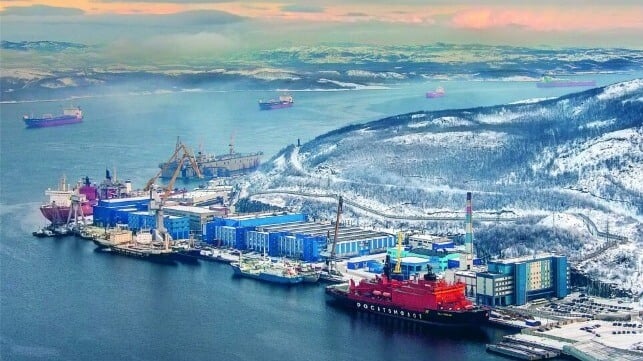Russia Projects High Demand for its Arctic Shipping Route in the Summer

Arctic shipping in the Russian-controlled Northern Sea Route (NSR) is poised for major growth this year, with a record number of vessels applying for permits. Voyages in NSR are open in the warmer months, during the summer and autumn from July 1 to November 30, when the ice has receded or has thinned.
With navigation in the route set to open next month, the state-controlled nuclear energy firm Rosatom said that it is expecting a 50 percent rise in voyages by foreign vessels this year. Rosatom controls the Russian icebreaker fleet and is in charge of operations along the NSR.
“There is a clear upward trend in international interest in NSR. In 2025, foreign companies are expected to conduct at least 1.5 times more voyages through NSR compared to the previous year,” Rosatom told Reuters.
Rosatom added that as of May 27, 196 applications had been submitted for vessel navigation along NSR, including vessels sailing under foreign flags. The bulk of the fleet will be vessels transporting liquefied gas from the Russian Arctic gas projects such as the Yamal LNG and Arctic LNG 2. For the summer navigation, around 30 LNG carriers have been granted permits to transit NSR. However, there are concerns that at least five sanctioned carriers are part of this list, according to the NSR Administration registry under Rosatom.
With the West tightening economic sanctions against Russia, there has been a rise of shadow fleet exporting sanctioned Russian oil and gas to international markets. In the Baltic Sea, the shadow fleet is seen as a threat to maritime safety in the region, with several reports of sabotage operations on the undersea cable infrastructure.
The opening of the NSR in the coming weeks is likely to see some of the shadow fleet shift to the route. Russia has been marketing NSR as shorter than the Suez Canal route, reducing travel time between Europe and Asia. However, expansion of the icebreaker fleet and Arctic port infrastructure is needed to make the route competitive.
Last year, NSR hit a record cargo volume of 38 million tons, up from 35 million tons in 2023.
